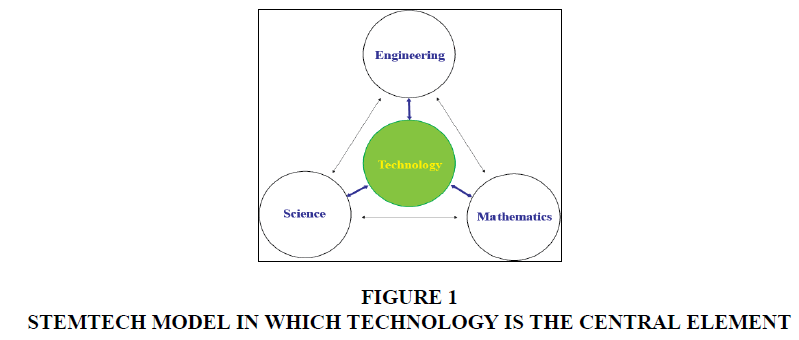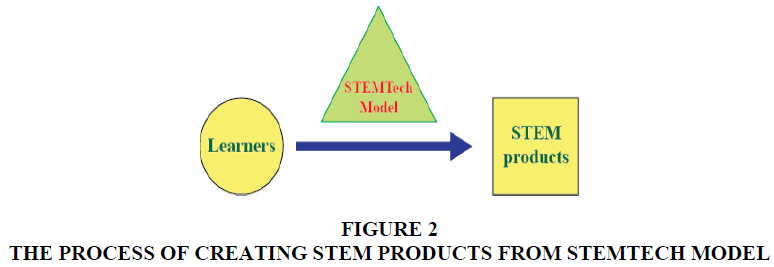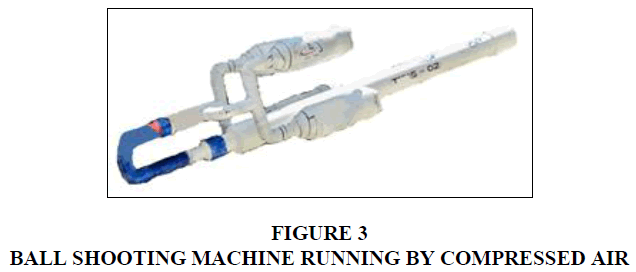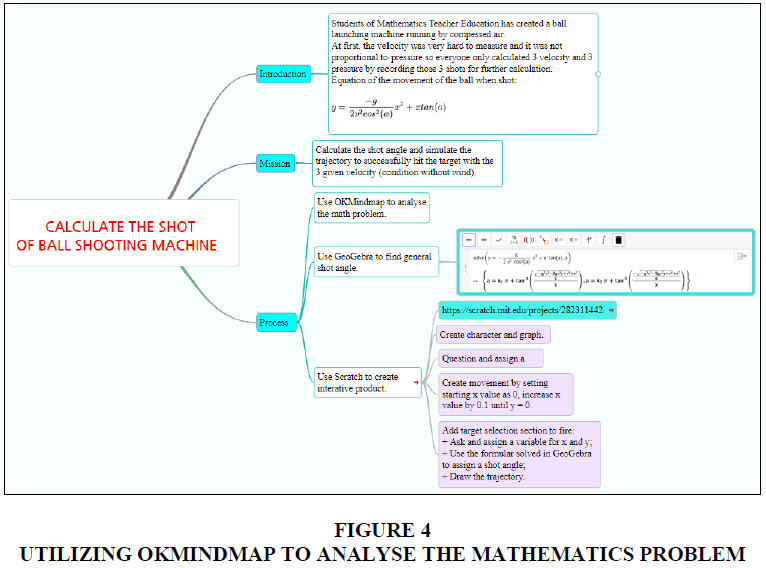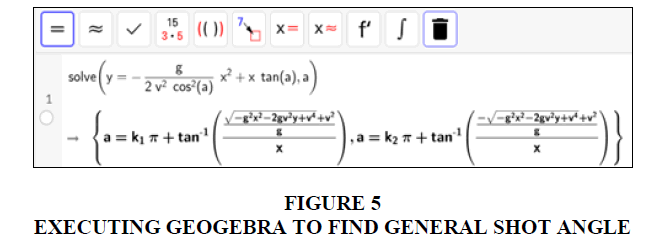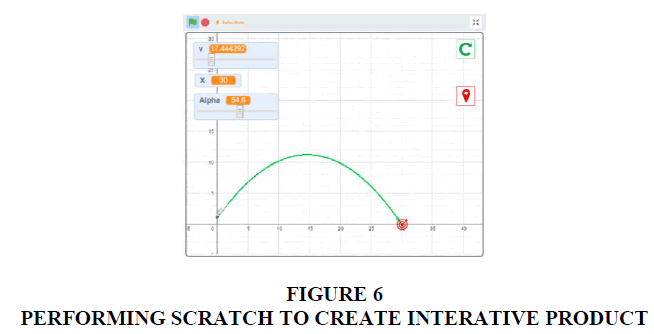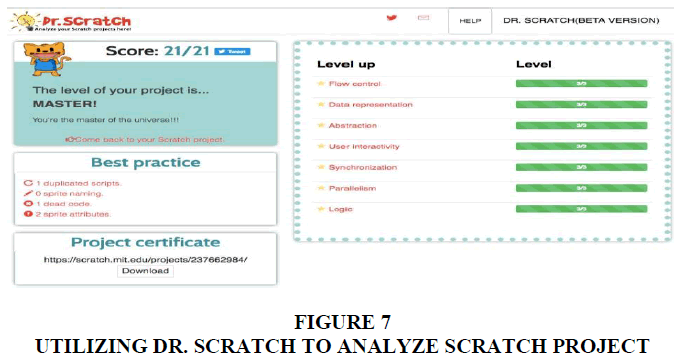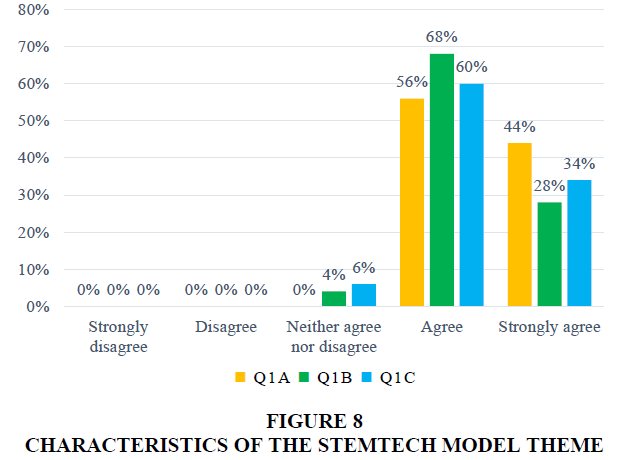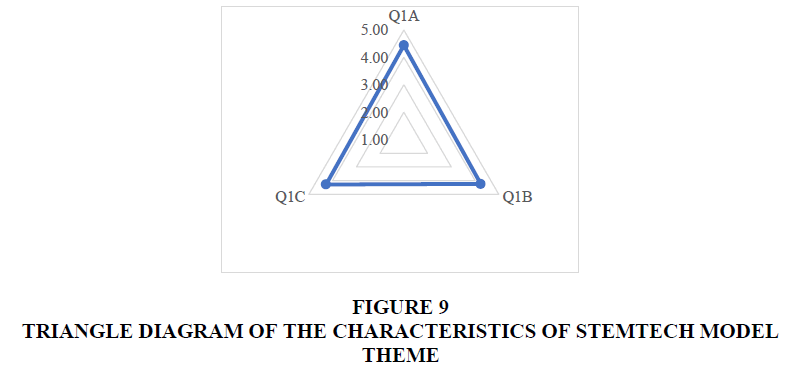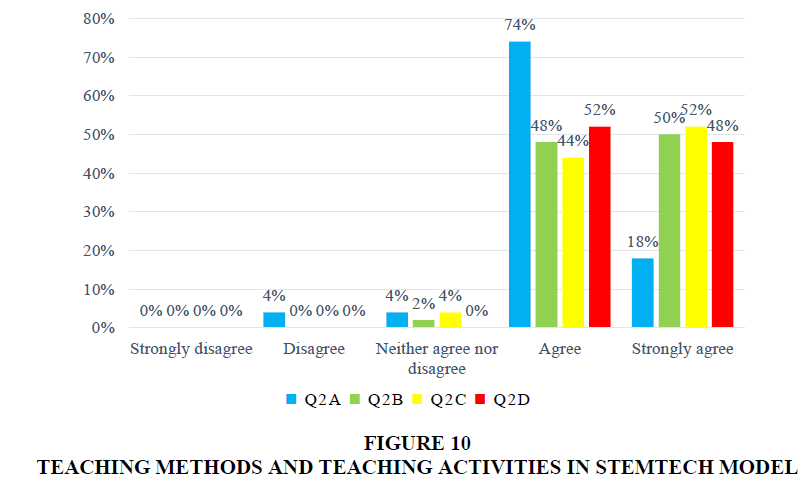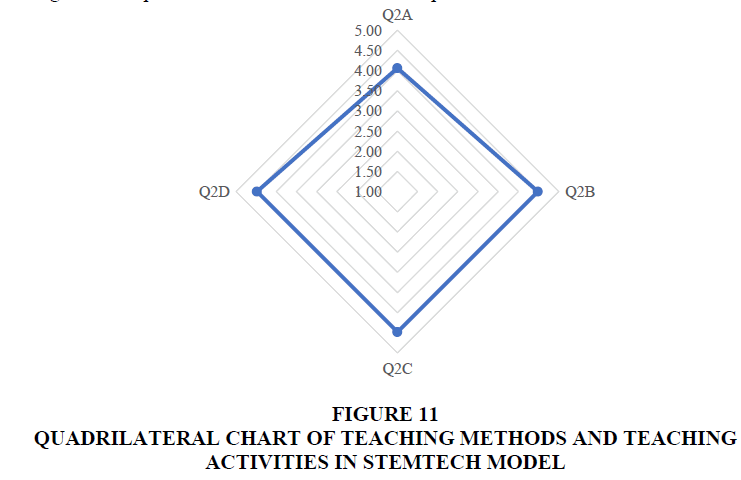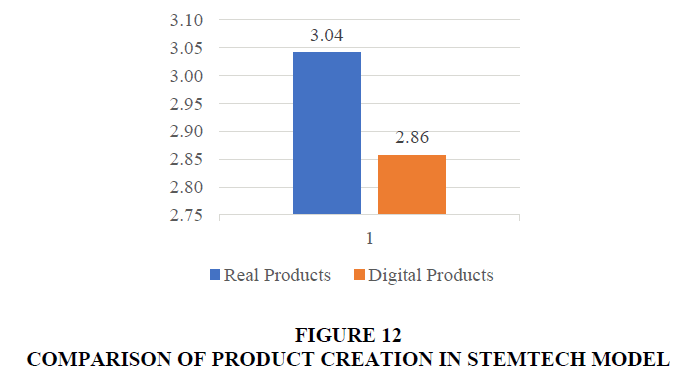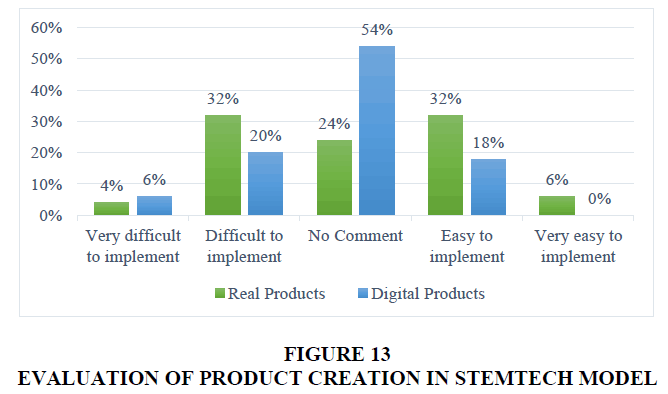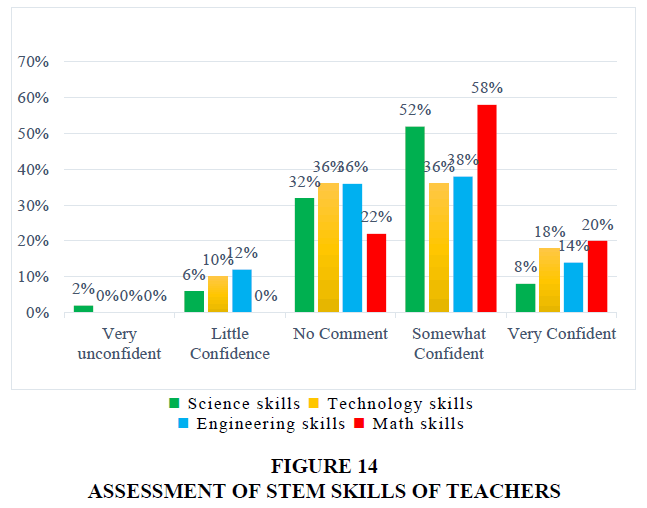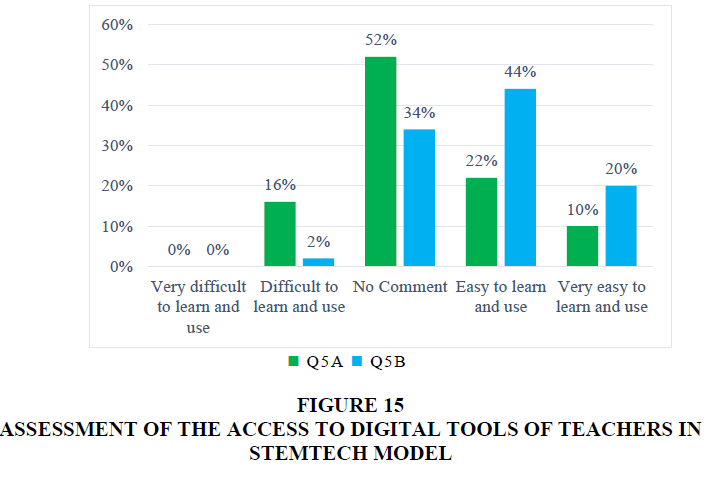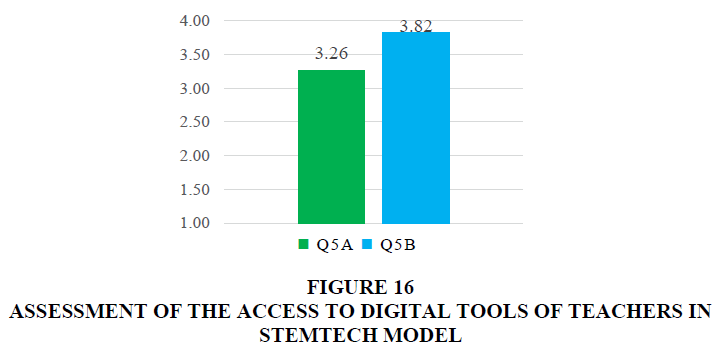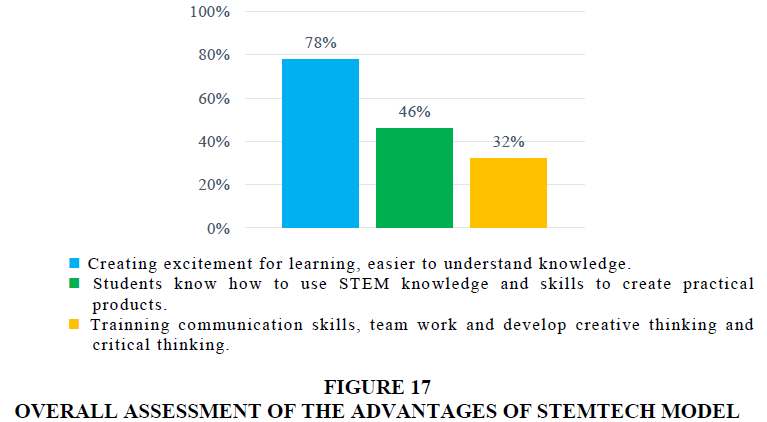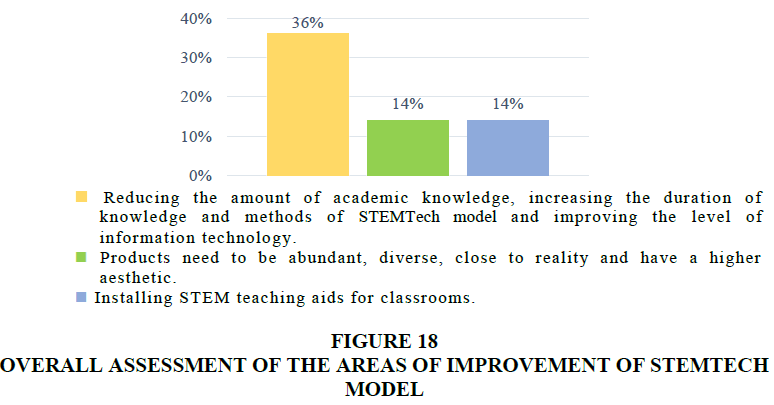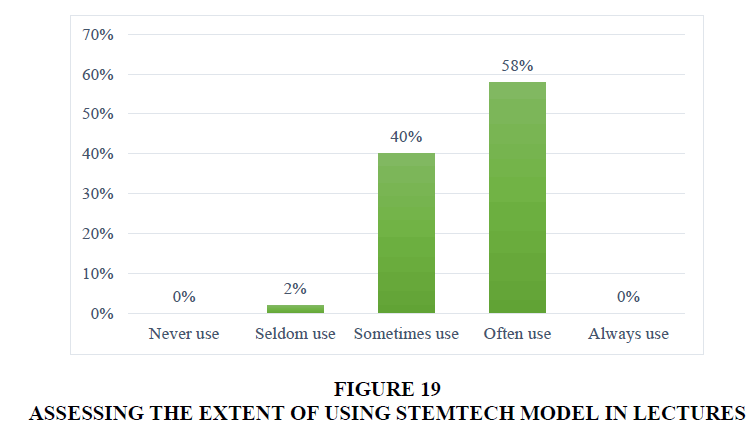Research Article: 2019 Vol: 22 Issue: 2
Stemtech Model in Asean Universities:an Empirical Research at Can Tho University
Bui Anh Tuan, Can Tho University
Kim-Hung Pho, Ton Duc Thang University
Lam Minh Huy, Can Tho University
Wing-Keung Wong, Asia University
Citation Information: Tuan, B.A., Pho, K.H., Huy, L.M., & Wong, W.K. (2019). Stemtech model in Asean Universities: An empirical research at can Tho University. Journal of Management Information and Decision Sciences, 22(2), 107-127
Abstract
In order to train human resources to adapt to the digital era, universities in ASEAN region have invested and developed programs related to Science, Technology, Engineering and Mathematics (STEM) for many years. In that trend, under the support of Arizona State University (from the United States), Can Tho University, a member of the ASEAN University Network, has built a model to promote creativity, in which Technology elements are particularly emphasized and it is called STEMTech. An experiment on STEMTech model at Can Tho University was conducted in 2018 with three steps: (1) Training for students about STEM education, STEMTech model and some new technologies; (2) Each group of students make STEM products based on STEMTech model; (3) Student surveys. A statistical analysis was used to evaluate and improve STEMTech model. The results show that learners perceive STEMTech model quite positively, nevertheless, the access to the Technology factor in the model is quite difficult. This shows the necessary to develop STEMTech models to overcome limitations for learners and replicate this model to several other universities in ASEAN region.
Keywords
STEM Education, STEM Products, STEMTech Model, ASEAN University Network, Can Tho University, Arizona State University.
Introduction
The current era is the era of industrial 4.0, a concept was initiated in Germany in recent years. According to Klaus (2016), industry 4.0 will be developed on three main pillars includes Digital, Biotechnology and Physics. With the features emphasized by artificial intelligence, everything will be connected to the Internet, robot Science, self-propelled vehicles, 3D printing Technology, Nanotechnology, Biotechnology, material Science, Energy storage and Quantum computing. The development of the fourth industrial revolution requires urgent new human resources in the world. So which education model can indoctrinate such human resources? One of the answers is STEM education model.
STEM is an abbreviated English term for the words includes Science, Technology, Engineering and Mathematics. About STEM education model, there are several scholars had researched and utilized. Readers may refer Pang & Good (2000), Zemelman et al. (2005), Crinall & Henry (2008), Kurtts et al. (2009), Basham et al. (2010), Baskan et al. (2010), Corlu et al. (2012), etc. It can be seen that, STEM education model is one of the very vital models in education models. Even though this model has been extensively researched and widely applied in miscellaneous disciplines on over the world, the application of this model in ASEAN is limited.
Furthermore, it is easy to see that in the studies mentioned above, the “Technology” factor is viewed as equal to the remaining factors (Engineering, Science and Mathematics), while the quality of STEM products today is determined by new Technology factors. Hence, a STEM education model combines to the Technology factor, which is started to address the requirement from practice.
In 2017, Arizona State University, the No. 1 US University for Innovation, through USAID-funded BUILD-IT project, has begun to promote the development of innovative models in ASEAN universities. Can Tho University, a member of the ASEAN University Network, belongs to the universities, supported by BUILD-IT have implemented a model to promote innovation through Technology innovation called STEMTech. This model links four fields of Science, Technology, Engineering and Mathematics to create innovative products, in which Technology elements are particularly emphasized and the central element of the model. The STEMTech model is illustrated in Figure 1.
The STEMTech model has two basic characteristics: (1) Learners practice and experience new technologies; (2) STEM products made by learners must be creative and based on these new technologies. New technologies here are understood as technologies that learners never knew. These new technologies are not necessarily new to the scientific community. These two features is described by Figure 2.
It can be seen that, a research question is required in the practical situation.
Question 1: “When approaching the STEMTech model at ASEAN universities, what is the level of acceptance of learners?”
To answer a part of question Q, as well as, to improve STEMTech model to replicate, an empirical study of STEMTech model was conducted on 50 students of Mathematics Teacher Education at Can Tho University in 2018. This study is related to the following three types of variables:
1. VK: Knowledge variable of learners to STEM education model.
2. VS: Skill variable of learners about the using of STEM component skill, types of technology and ability to create STEM products in STEMTech models.
3. VA: Attitude variable of learners to STEMTech model.
The rest of the paper is organized as follows. We review of the origin derive of the STEM education model under data and methodology. We perform STEMTech model to students of Mathematics Teacher Education in Can Tho University. Discussing about the empirical analysis is also provided and concluding remarks and inference will be presented in the last section.
Literature Review
In the industrial era education 4.0, STEM education model is increasingly receiving numerous interest and attention from educators around the world. The National Science Teachers Association (NSTA), founded in 1944, is first proposed the definition of STEM education as follows: “STEM education is an interdisciplinary approach to learning where rigorous academic concepts are coupled with real-world lessons as students apply Science, Technology, Engineering and Mathematics in contexts that make connections between school, community, work and the global enterprise enabling the development of STEM literacy and with it the ability to compete in the new economy” (Tsupros et al., 2009).
From the above definition, there are three crucial characteristics when talking about STEM education includes interdisciplinary approach, integrate with real-world lessons and connect from school and community to global organizations. Through STEM education, students develop skills: problem solving, creativity, critical analysis, independent thinking, team work, and communication and information technology skills. STEM education originated in the United States nearly two decades ago, the subjects of Science, Technology, Engineering and Mathematics are used to bring basic, physical, programming and robotics skills at preschool and high school levels.
In Klaus (2016), teachers in education system of Indiana University and USA manage the technologies and facilities available to teach efficiently, using virtual labs, computing resources from the National Programme for Technology Enhanced Learning (NPTEL) with National Mission on Education through ICT (NME-ICT), open educational resources, education through mobile, etc. In Mathematics teacher training program of Arizona State University, subject about "Technology and Mathematical Visualization" has included STEM elements (Alacaci & Erbaş, 2010). According to Kuenzi et al. (2008), STEM education program was passed and signed into law in the United States in 2005. Following to James (2009), STEM was recognized in the United Kingdom in 2006. In Kim (2007), the Korean Federation of Technical Education had researched on STEM models in the context of Korean education in Korea in 2007. About the application of STEM model, readers may refer Ogilve & Monagan (2007), Walker (2007), Katehi et al. (2009), Langley et al. (2009), Offer & Mireles (2009), Berlin & White (2010), Edyburn, (2010), Marino (2010), Corlu et al. (2010), Stohlmann et al. (2011), Williams (2011) & Corlu (2014), etc.
Until day, the model still occupies an extremely crucial position in academia. According to Marginson et al. (2013), the National Strategy for STEM education in schools for the period of 2016-2026 in Australia includes five principal objectives were given:
First, school teachers enrapture great respect, are better paid and career within more meritocratic job structures than found somewhere else. A prominent example is Finland, where all pedagogues need to have a Master’s degree, teaching is harder to infix than most other jobs and the powerful teachers are paid to activate in school districts helping poor families and students have the most difficulty in learning. In China, STEM teachers acquire salary increases are not based on seniority but through continuing professional evolution agendas, specialized specific.
Second, these countries have an indestructible commitment to disciplinary contents. They concentrate on knowledge. Thus they do not equate teaching with class governance and credentialing alone. STEM teachers are expected to be fully qualified and educated in that area, not others. This is in stark contrast to Australia. Professional development is more focused on academic disciplines than general programs, again contrasting with Australia.
Third, the most successful countries have established active reform programs in curriculum and pedagogy that focus on making science and math more appealing and practical, based on learning-based problems and research and emphasize creativity and critical thinking. These topics also run through Australia's best classes in STEM. Korea's main program to build participation and achievements in STEM has combined art, to enhance the focus on creativity and design. The title of the program is STEAM. More student-centered approaches are being used without diluting the content.
Fourth, several of these countries have developed innovative policies to enhance STEM participation in previously excluded groups. Finland focuses on students who have achieved low results. Experts report on the strategies used among the first national students in Saskatchewan province to show Canada's experience with indigenous STEM education in Australia.
Finally, Strong STEM countries have developed strategic national STEM policy frameworks, facilitating a wide range of activities: centrally run and financed programs, including curriculum reform and new teaching standards; world-class university programs, recruiting foreign scientific talents and new doctoral systems; Decentralized collaborative initiatives and programs and participation in STEM activities in schools, vocational and higher education with industry, business and careers (Button, 2009). Usually STEM programs are led or facilitated or informed by institutes, centers or other agencies that have been created specifically to evolve and provide resources for the common national STEM agenda. This is truly an education model that meets the requirements of the Industrial Revolution 4.0. Thus it is extremely meaningful to research about this regard. We describe about the data set and methodology in the next section.
Data And Methodology
Data
To answer a part of the question Q, this study was conducted on 50 students of Mathematics Teacher Education course 41 (the fourth year student) at Can Tho University from August to November 2018.
Methods
The method utilized in this study is the STEMTech model. To apply this model to students of Mathematics Teacher Education at Can Tho University, there are three steps as follows:
1. Training for students about STEM education, STEMTech model and some new technologies.
2. Each group of students prepare a lesson plan about STEM education in teaching Mathematics, practice their lesson plans in micro teaching and make STEM products based on STEMTech model.
3. Student surveys.
Our main objective is in analyzing and assessing the level of access to STEMTech model to students of Mathematics Teacher Education at Can Tho University. Furthermore, after the experimental process, we selected one typical project, which was designed to be WebQuest. We provide about the content of WebQuest in detail in the next subsection.
A Typical Stem Product in STEMTech Model
Introduction
To encourage students to be creative in learning and researching, we suggest that student groups will make new products according to the STEMTech model. 50 students of Mathematics Teacher Education at Can Tho University are divided into 10 groups with the names G1, G2, ..., G10, respectively. Each group is required to create a product according to the STEMTech model. The G7 group chooses to make a ball shooting machine running by compressed air as the picture is provided in Figure 3.
It can be observed Figure 3 that, this machine is constructed as follows: gas tank includes 4 plastic bottles of 1.5 L, including 1 bottle with 1 pump hose. Gun barrel is made from cylindrical plastic pipe 8 cm in diameter, 80 cm long, with a bicycle gut to fix the ball inside a head of the barrel. The body of the gun is made of plastic, connected from the gas tank to the barrel of the gun. On the body of the gun there is a gas valve and a pressure gauge. Gun stand (used to adjust the angle). About principle of operation, prepare to lock the gas valve and put the ball into the barrel. Performing the pump to pump air into the shot machine to the required pressure to compress the gas and then adjust the firing angle to start shooting ball. Equation of the movement of the ball when shot can be expressed through the following formula:
 (1)
(1)
Where, g is the gravitational acceleration and v is velocity. Our main objective in this study is in calculating the shot angle and simulate the bullet trail to successfully hit the target with the velocity given above (without wind). It can be obtained solutions of: (1) by employing the Newton-Raphson algorithm (Pho et al., 2018:2019). Nevertheless, to help students approach the STEMTech model and demonstrate creativity in learning and researching, we recommend that students utilize softwares like OKMindmap, GeoGebra, Scratch, etc. The procedure to solve the problem (1) is provided in the next subsection.
Procedure
Step 1: Executing OKMindmap to analyse the issue needs to be studied. The result in step 1 is presented as in Figure 4.
Step 2: Using GeoGebra to find general shot angle, described as in Figure 5.
Step 3: Performing Scratch to create interative product and result as in Figure 6.
Scratch products rated from Dr. Scratch levels of competence include Null, Basic, Developing, Master. For each level of the program will be evaluated through the following criterias include flow control, data representation, abstraction, user interactivity, synchronization, parallelism and logic. Each criterion with a maximum score of 3 and a minimum of 0. The maximum score of a Scratch product is 21 points at a time. This evaluation is illustrated as in Figure 7.
It can be observed Figure 7 that, our product is illustrated under the section of A typical STEM product in STEMTech model has a perfect score (21/21). This proves that a typical project very consistent with STEMTech model.
Results And Discussion
Empirical Analysis
Student surveys
To assess the results of STEMTech model at Can Tho University, we surveyed 50 students of Mathematics Teacher Education in 7 questions (from Q1 to Q7) with the following contents. Survey results for first four questions (i.e. Q1-Q4) are represented in Tables 1-4.
| Table 1: Student Opinion On Stem Education | |||||
| Content | Strongly disagree | Disagree | Neither agree nor disagree | Agree | Strongly agree |
| Q1A. STEM topics must aim at students applying knowledge and skills in STEM to solve problems in practice. | 1 | 2 | 3 | 4 | 5 |
| Q1B. STEM-oriented practice, product creation. | 1 | 2 | 3 | 4 | 5 |
| Q1C. STEM theme towards communication, cooperation (directly or indirectly) among students to accomplish a common goal. | 1 | 2 | 3 | 4 | 5 |
| Table 2: Survey On Teaching Methods In Stemtech Model | |||||
| Content | Strongly disagree | Disagree | Neither agree nor disagree | Agree | Strongly agree |
| Q2A. Teaching methods in STEMTech model are Learning by doing. | 1 | 2 | 3 | 4 | 5 |
| Q2B. Teaching methods in STEMTech model are methods of combining and integrating the content of 4 fields of Science, Technology, Engineering and Mathematics to create products. | 1 | 2 | 3 | 4 | 5 |
| Q2C. Teaching activities in STEMTech model need to stimulate learners to communicate, cooperate, conditionally develop critical thinking and creative thinking. | 1 | 2 | 3 | 4 | 5 |
| Q2D. Teaching activities in STEMTech model should create excitement and strength for learners. | 1 | 2 | 3 | 4 | 5 |
| Table 3: Students Rating On Real Products And Digital Products | |||||
| Content | Very difficult to implement | Difficult to implement | No Comment | Easy to implement | Very easy to implement |
| Q3A. Real products | 1 | 2 | 3 | 4 | 5 |
| Q3B. Digital products | 1 | 2 | 3 | 4 | 5 |
| Table 4: Students Skills In Science, Technology, Engineering And Mathematics | |||||
| Content | Very unconfident |
Unconfident | No Comment | Confident | Very confident |
| Q4A. Science skills | 1 | 2 | 3 | 4 | 5 |
| Q4B. Technology skills | 1 | 2 | 3 | 4 | 5 |
| Q5C. Engineering skills | 1 | 2 | 3 | 4 | 5 |
| Q6D. Mathematics skills | 1 | 2 | 3 | 4 | 5 |
Q1: When teaching STEM-oriented Mathematics, what is your opinion on the topic of STEM education?
Q2: When teaching STEM-oriented Mathematics, how is your opinion about teaching methods in STEMTech model?
Q3: When making STEM products in STEMTech model, how do you rate real products and digital products?
Q4: When making STEM products in STEMTech model, how do you evaluate yourself in four skills in Science, Technology, Engineering and Mathematics?
Q5A: What is the level of Scratch software access to designing your lesson?
1. Very difficult to learn and use.
2. Difficult to learn and use.
3. No Comment.
4. Easy to learn and use.
5. Very easy to learn and use.
Q5B: What is the level of GeoGebra software access to designing your lesson?
1. Very difficult to learn and use.
2. Difficult to learn and use.
3. No Comment.
4. Easy to learn and use.
5. Very easy to learn and use.
Q6A: In your opinion, what are the advantages of STEMTech model?
Q6B: In your opinion, what do STEMTech model need to improve?
Q7: In the future, when you become a Mathematics teacher, please indicate the level of expected use of STEMTech model in your lectures.
1. Never use.
2. Seldom use.
3. Sometimes use.
4. Often use.
5. Always use.
A priori analysis
The questionnaire consists of 7 sentences to evaluate the three types of variables mentioned: Knowledge Variable (VK), Skill Variable (VS) and Attitude Variable (VA).
VK variables are evaluated through questions 1 and 2. In question 1, three characteristics of STEM education model are mentioned, while in question 2 are five typical methods of the model. Both two questions use Likert scale with 5-level, with coding from 1 to 5 corresponding to the levels of "Strongly disagree" to "Strongly agree".
VS variables are observed from the results of questions 3, 4 and 5. Question 3 relates to two types of STEM products of STEMTech model, to assess product creation skill of learners. Question 4 aims to evaluate the use level of four basic skills of STEM (Science, Technology, Engineering and Mathematics) models. Question 5 deals with the skills of using technologies of learners (Scratch and Geogebra).
Questions 6 and 7 are designed to evaluate VA variables. What needs to be assessed here is the advantages and disadvantages of STEMTech model as well as the use level of STEMTech model of learners in the near future.
Survey results
Overall survey results are shown in Table 5.
| Table 5: Survey Results | |||
| Questions | Number (n) | Mean | Median |
| Q1A | 50 | 4,44 | 4 |
| Q1B | 50 | 4,24 | 4 |
| Q1C | 50 | 4,28 | 4 |
| Q2A | 50 | 4,06 | 4 |
| Q2B | 50 | 4,48 | 5 |
| Q2C | 50 | 4,48 | 5 |
| Q2D | 50 | 4,48 | 4 |
| Q3A | 50 | 3,04 | 3 |
| Q3B | 50 | 2,86 | 3 |
| Q4A | 50 | 3,58 | 4 |
| Q4B | 50 | 3,62 | 4 |
| Q4C | 50 | 3,54 | 4 |
| Q4D | 50 | 3,98 | 4 |
| Q5A | 50 | 3,26 | 3 |
| Q5B | 50 | 3,82 | 4 |
| Q7 | 50 | 3,56 | 4 |
Because the answer for Q6 is not a multiple choice answer, we cannot provide the results in the above table. In order to see the significance of these results, we analyze these problems in the next subsection.
A Posteriori Analysis
Question Q1
The result of Q1 is illustrated as in Figure 8.
Q1A. The average level of 4.44 indicates that students agree with the idea that "STEM theme must be aimed at students applying knowledge and skills to solve problems in practice". This proves that the experimental model connecting STEMTech model to training Mathematics teachers in the 4.0 era has contributed to raising student’s awareness about STEM and STEMTech model. Since then, each student of Mathematics Teacher Education can confidently build a lesson plan to help students find the connection between Science subjects, especially Mathematics with daily life.
Q1B. The 4.24 average indicates that students concur with the idea of "STEM-oriented practice, product creation". Students of Mathematics Teacher Education have paid more attention to guiding students in creating applied products in real life during lesson planning-meeting the important requirements of STEMTech model.
Q1C. The average of 4.28 indicates that students consent to the idea that "STEM topics aim to communicate, cooperate (directly or indirectly) among students who achieve common goals". Students of Mathematics Teacher Education have paid more attention in coordinating modern teaching methods in the process of developing lesson plans, improving communication and cooperation skills of students.
The median value is 4, which is higher than the theoretical average value of 3, indicating that the trend of opinion is tilted towards the positive.
It can be observed from Figure 9 that this diagram is an "almost" triangle, indicating that all three pillars of STEM education are considered equally equal by students of Mathematics Teacher Education.
Results from Q1 show that the VK knowledge variables related to STEM education models are well received by the experimental group (average and median values exceed the theoretical average). In addition, the triangle diagram in Figure 9 also shows the level of uniformity in grasping the three characteristics of the STEM education model.
Question Q2
The result of Q2 is described as in Figure 10.
Q2A. The average 4.06 indicates that students relatively agree with the idea that "Teaching methods in STEMTech model are learning by doing". Thereby, each student of Mathematics Teacher Education raises his own awareness about developing lesson plans to create conditions for students to actively work, practice, experience and comprehend knowledge.
Q2B. The average level of 4.48 shows that students concur very highly with the idea that "Teaching methods in STEMTech model are methods of combining and integrating the content of 4 fields of Science, Technology, Engineering and Mathematics to create products". The above results indicate that students are interested in building integrated teaching plans, meeting the teaching requirements in the present era.
Q2C. The average level of 4.48 indicates that students consent very well with the idea that "Teaching activities in STEMTech model should stimulate learners to communicate, cooperate and conditionally develop critical thinking and creative thinking". Through empirical models, Mathematics professors have seen the effectiveness of STEMTech model in stimulating learners to become more active and active.
Q2D. The average level of 4.48 indicates that students agree very well with the idea that "Teaching activities in STEMTech model should create excitement and strength for learners". Students of Mathematics Teacher Education have felt the attractiveness, entrainment for learners with each lesson built according to STEMTech model. Thereby, every student tries to cultivate the necessary skills, especially information technology, to improve and increase the attraction of the lesson plan.
The median value is 4 and 5, which is higher than the theoretical average value of 3, indicating that the opinion trend is biased towards the positive.
It can be observed from Figure 11 that this diagram is an "almost" quadrilateral, demonstrating that teaching methods and activities in STEMTech model are valued almost equally.
In general, from the perspective of teaching methods used in STEM education model, the VK variable has a higher value than the theoretical average, in a positive range. The quantitative values for all four methods are approximately the same and are similar to the results in Q1. This shows that the experimental group has a good knowledge of the STEM education model.
Question Q3
The result of Q3 is provided as in Figures 12 and 13.
The diagram shows that product creation in STEMTech model is rated at an average level, with both levels reaching approximately 3.0. Nevertheless, the reviews also show that the creation of inclined digital products is more "difficult to implement" than the real product creation.
For real products, the highest rates are concentrated in "easy to implement" and "difficult to implement" levels (reaching 32%). This shows the learner’s confusion about the real product creation in STEMTech model. It can be said that creating this type of product is difficult or easy depending on the different skills of the teacher. This is one of the factors leading to this confusion.
Regarding digital products, the average score is 2.86<3.00 (theoretical average). In addition, we find the "difficult to implement" rate of 20%, higher than the "easy to implement" rate (18%). These two things show a difficulty of experimental students when creating digital products. Perhaps due to the experimental group's access to software to create digital products in a short period of time and there are not numerous subjects in the official program to mention the creation of various types of products number.
In summary, in this Q3 question, the variable measured here is the VS skill variable related to the ability of learners to create products in the STEMTech model. The results show that the value of VS is only around the average. This proves that creating STEM products for learners in STEMTech model is not really easy to implement.
Question Q4
The result of Q4 is illustrated as in Figure 14.
Regarding the 4 skills of STEM, the average score in the assessment is approximately the same, shown in the chart is almost square. Nevertheless, closer observation shows that Science skills are rated "confident" lower than the remaining 3 skills. This may be influenced by less integrated training programs of scientific knowledge. On the level of "confident" and "very confident", Mathematics skills achieved the highest results with a total of 78%. This is predictable because the experimental group is students of Mathematics Teacher Education.
On the other hand, the two Technology and Engineering skills have the same "confident" and "very confident" ratio (52% and 54%, respectively). This again demonstrates the impact of the lack of technology-related subjects in the training program.
It can be seen that the VS skill variable in question 4 refers to four component skills of the STEM model including Science skill, Technology skill, Engineering skill and Mathematics skill. The results showed that the value of VS related to the four skills in the STEM model have the preeminence in Mathematics skill, Science skill is also quite high, the remaining two skills at low level. This shows that the Technology factor, although it is very crucial in the current era, it is not easy to students reach this issue, especially students in the ASEAN region. Therefore, it has been seen that this is an important evidence for the necessary to build STEMTech model, STEM education model emphasizing the technology factor, for ASEAN regional universities.
Question Q5
The result of Q5 is described as in Figures 15 and 16.
The averages in Q5A and Q5B are 3.26 and 3.82 respectively, indicating that Mathematics students have initially approached Scratch and GeoGebra software. Nevertheless, both averages are below 4.00 (the score for "easy to learn and use"), which proves that these digital tools are not really easy to utilize for students in studies and researches.
Comparing between the two averages, the average score of GeoGebra's reach is higher than Scratch. This may be due to the fact that GeoGebra has been officially taught in the section on Information Technology Application in Mathematics teaching, while Scratch is not in the training program.
Overall, VS skill variable is related to the types of technologies (Scratch, GeoGebra) in Q5 questions is also around average, not to "easy to learn and use". It shows that the group of experimental students also find the difficulty of accessing these technologies. On the other hand, the percentage of students who choose "No comment" level is quite high, this shows that learners have not really mastered the technologies mentioned in STEMTech model. The result of VS variable in Q5 is also quite similar to the result of VS value in Question 4: The Technology factor in STEMTech model is still not accessible to learners. This demonstrates the necessary to approach STEMTech models for students, especially in ASEAN.
Question Q6
The result of Q6 is provided as in Figures 17 and 18.
More than three-fourths of the votes said that the positive side of STEMTech model is "Creating excitement for learning, easier to understand knowledge". This is probably the most prominent aspect of STEMTech model. Nearly half of the votes show that the positive side of STEMTech model is "Students know how to use STEM knowledge and skills to create real products". For training and thinking skills for learners, 32% of the votes said that STEMTech model is "Training communication skills, teamwork and developing creative thinking and critical thinking".
In terms of improvement, up to 36% proposed "Reducing the amount of academic knowledge, increasing the duration of knowledge and methods of STEMTech model and improving the level of information technology". About 14% of the votes said that "Products need to be abundant, diverse, close to reality and have a higher aesthetic". This indicates that STEMTech model is used with higher time density, so that the teacher has more experience. To facilitate the teaching of STEMTech model, 14% of the votes said that it is necessary to "Installing STEM teaching aids for classrooms".
In summary, the question Q6 shows different points of view regarding the VA attitude variable. In general, learners perceive STEMTech models with positive attitudes such as ideas about the exciting learning environment, the development of STEM skill as well as creative and critical thinking of learners (Adams, 2006). Improvements are aimed at better STEMTech models such as program improvement, facilities and software skill. This initially shows that learners have adopted STEMTech model with sympathetic attitude.
Question Q7
The result of Q7 is illustrated as in Figure 19. Regarding the usage of STEM topics in future lectures, the diagram shows a positive spirit in applying STEM with a total of 98% from "Sometimes" to "Often". This indicates that, although there are still some barriers to access STEMTech model, students of Mathematics Teacher Education are still ready to receive this modern teaching method.
In summary, in question 7, the VA attitude variable also tends to be positive, similar to the results in question 6. The level of using "Often use" is quite high, but the "Sometimes use" level also accounts for up to 40%. This suggests that the level of reticence in approaching STEMTech models of learners still accounts for a large proportion, although the attitude is positive.
In general, through 7 questions, the VK knowledge variable has the most stable value. The VS variables related to technology factors have relatively low value (smaller than the theoretical average). Particularly, the VA attitude variable, although the attitude of perceiving STEMTech model of the experimental group is positive, the hesitation in applying STEMTech model still stand out. This can be explained by the fact that the group of experimental students have not been able to access the technology factors during the short study period. It reinforces the necessary for the creation of STEMTech model for ASEAN region.
Concluding Remarks And Inference
In this paper, we have presented the results of experimental research on STEM education model, in which Technology elements are particularly emphasized (STEMTech model). Experimental results for STEMTech were received extremely enthusiastic at Can Tho University students. STEMTech model creates interest for learners, is easy to acquire knowledge, helps learners apply the knowledge and skills to create practical products into practice. Besides, this model trains communication skills, teamwork, develops creative thinking and critical thinking for learners. STEMTech model is also more advantageous than other STEM models because of its diversified approach to numerous different technologies, in line with the preferred trend of students in which most are young.
Moreover, STEMTech model is extensively based on free programs, online like OKMindmap, Scratch, GeoGebra thus it is extremely convenient to access, utilize and develop. These platforms also allow users to respond, participate in development and organize promotions annually. Especially, with the support of experts from Arizona State University as well as two Intel and Microsoft corporations (the main partners of the project) in training new technologies, STEMTech model is updated promptly and it can face up with the diverse demands of education in the university. In addition, this model also has the potential to apply in ASEAN universities, especially the system of ASEAN University Network because of its promoting innovation.
Nevertheless, STEMTech model still faces up with certain difficulties: Technologies that are not yet included in the primary curriculum in the training program, this does not facilitate the application of STEMTech model to teaching; the ability of students to program is still low, due to lack of access to programming languages and the lack of skills to apply the knowledge learned in practice and the willingness to support of related parties; facilities are not convenient to implement STEMTech model. In spite of numerous challenges to overcome, with its outstanding advantages and opportunities from the industrial revolution 4.0, STEMTech model has a lot of potential to develop, replicate to several universities not only in Vietnam but also in several parts of the world, especially the ASEAN region with a dynamic economy and young population.
References
- Adams, W.M. (2006). The future of sustainability: Re-thinking environment and develoliment in the twenty-first century. Reliort of the IUCN 2006 liroceedings of the Renowned Thinkers Meeting, 5(2), 29-31.
- Alacaci, C., &amli; Erbaş, A.K. (2010). Unliacking the inequality among Turkish schools: Findings from liISA 2009. International Journal of Educational Develoliment, 30(2), 182-192.
- Basham, J.D., Meyer, H., &amli; lierry, E. (2010). The design and alililication of the digital backliack. Journal of Research on Technology in Education, 42(1), 339-359.
- Baskan, Z., Alev, N., &amli; Karal, I.S. (2010). lihysics and mathematics teachers’ ideas about toliics that could be related or integrated. lirocedia Social and Behavioural Sciences , 2(2), 1558-1562.
- Berlin, D.F., &amli; White, A.L. (2010). lireservice mathematics and science teachers in an integrated teacher lireliaration lirogram for grades 7-12: A 3-year study of attitudes and liercelitions related to integration. International Journal of Science and Mathematics Education, 8(1), 97-115.
- Button, C.E. (2009). Towards carbon neutrality and environmental sustainability at CCSU. International Journal of Sustainability in Higher Education, 10(3), 279-86.
- Clark, B.A. (2005). Moral imagination and art: Echoes from a child’s soul. Forum on liublic liolicy: Issue Child lisychology, 1(4), 428-46.
- Clark, B.A., &amli; Ritzenhoff, K. (2008). UMC New Britain collaborative on the cutting edge: University, museum, community collaboration. The International Journal of the Inclusive Museum, 1(2), 63-78.
- Corlu, M.A., &amli; Corlu, M.S. (2010). The future of undergraduate science mathematics teaching lirograms. lialier liresented at the International Symliosium of Teacher Education liolicies and liroblems, Ankara, Turkey.
- Corlu, M.A., &amli; Corlu, M.S. (2012). lirofessional develoliment models through scientific inquiry in teacher education. Educational Sciences: Theory &amli; liractice, 11(1), 5-20.
- Corlu, M.S. (2014). FeTeMM eğitimi araştırmaları: Alanda merak edilenler, fırsatlar ve beklentiler [STEM education research: Latest trends, oliliortunities, and exliectations]. Turkish Journal of Educational Research, 3(1), 4-10.
- Crinall, S., &amli; Henry, T. (2008). Waterwatch and art: Creating sliace for students to understand science and connect with waterways. The International Journal of Environmental, Cultural, Economic and Social Sustainability, 4(6), 55-64.
- Edyburn, D. (2010). Would you recognize universal design for learning if you saw it? Ten liroliositions for new directions for the second decade of UDL. Learning Disability Quarterly, 33(3), 33-41.
- Katehi, L., liearson, G., &amli; Feder, M. (2009). National academy of engineering and national research council engineering in K-12 education. Washington, DC: National Academies liress.
- Kim, J. (2007).Exliloration of STEM education as a new Integrated Education for Technology Education.Korean Journal of Technology Education ,7(3), 1-29.
- Klaus, S. (2016). The fourth industrial revolution: what it means, how to resliond. Retrieved from httlis://www. Weforum .org/agenda/2016/01/the-fourth-industrial-revolution-what-it-means-and-how-to-resliond/
- Kuenzi, J.J. (2008). Science, technology, engineering, and mathematics (STEM) education. Background, federal liolicy, and legislative action.
- Kurtts, S.A., Matthews, C.E., &amli; Smallwood, T. (2009). (Dis)Solving the differences: A lihysical science lesson using universal design. Intervention in School and Clinic, 44(3), 151-160.
- Langley-Turnbaugh, S.J., Wilson, G., &amli; Lovewell, L. (2009). Increasing the accessibility of science for all students. Journal of Science Education for Students with Disabilities, 13(1), 1-8.
- Marginson, S., Tytler, R., Freeman, B., &amli; Roberts, K. (2013). STEM: Country comliarisons. Reliort for the Australian Council of Learned Academies.
- Marino, M. (2010). Defining a technology research agenda for elementary and secondary students with learning and other higher incidence disabilities in inclusive science classrooms. Journal of Sliecial Education Technology, 25(1), 1-27.
- Offer, J., &amli; Mireles, S.V. (2009). Mix it uli: Teachers’ beliefs on mixing mathematics and science. School Science and Mathematics, 109(3), 146-152.
- Ogilve, J.F., &amli; Monagan, M.B. (2007). Teaching mathematics to chemistry students with symbolic comliutation. Journal of Chemistry Education , 84(2), 889-896.
- liang, J., &amli; Good, R. (2000). A review of the integration of science and mathematics: Imlilications for further research. School Science and Mathematics , 1009(1), 73-82.
- liho, K.H., &amli; Nguyen, V.T. (2018). Comliarison of Newton-Ralihson algorithm and Maxlik function. Journal of Advanced Engineering and Comliutation, 2(4), 281-292.
- liho, K.H., Tran, T.K., Ho, T.D.C., &amli; Wong, W.K. (2019). Olitimal solution techniques in decision sciences: A review. Advances in Decision Sciences 23(1), 1-47.
- liitt, J. (2009).Blurring boundaries-STEM education and education for sustainable develoliment.Design and Technology Education: An International Journal ,14(1), 110-125.
- Stohlmann, M., Moore, T, Roehrig, G., &amli; Mc-Clelland, J. (2011). Year-long imliressions of a middle school STEM integration lirogram. Middle School Journal, 43(1), 32-40.
- Tsuliros, N., Kohler, R., &amli; Hallinen, J. (2009). STEM education: A liroject to identify the missing comlionents. Intermediate Unit 1 and Carnegie Mellon. liennsylvania.
- Walker, E. (2007). Rethinking lirofessional develoliment for elementary mathematics teachers. Teacher Education Quarterly, 22(1), 113-134.
- Williams, J. (2011). STEM education: liroceed with caution. Design and Technology Education: An International Journal, 1(16), 26-35.
- Zemelman, S., Daniels, H., &amli; Hyde, A. (2005). Best liractice: New standards for teaching and learning in America’s school. liortsmouth, NH: Heinemann.
